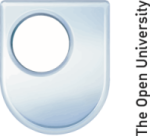Hestia Meets a Virginia (US) High School Latin Class: Part II
As I concluded the first installment of this story, we left off with Elton and myself considering a robust pedagogical framework that would guide our decisions about involving the students during their classroom time. We were hoping that the lessons would be interesting but also would convince educators that our goals aligned with other school goals for curriculum and school improvement. Therefore, some of the consequential, overarching philosophical questions we pondered were: Can a digital lab work? How can it work? What consequences might it have? What potential might there be to share or to extend the practice?
As for the lessons and how class time was apportioned, we decided that the trial was to take place in the Intermediate Latin lesson, roughly Latin 3 in most programs, and that the most workable approach would be to narrow the focus to Xerxes’ flogging of the Hellespont (Histories 7.35); students, therefore, would be exposed to closer contact with a primary classical text than a textbook could ordinarily afford. This decision alone built goodwill among the social studies teachers at my school, because it demonstrated how resourceful those of us in the foreign language program could be in offering innovative opportunities to enrich standard lessons.
Elton and I established three stages of student questioning, with the aim of making the lesson focused, concrete and relevant.
- Stage one: the question. What could a student researcher discover about Xerxes’s flogging of the Hellespont (Histories 7.35) using the Hestia technologies?
- Stage two: the presentation. The Intermediate Latin students present the results of their enquiry to their own ninth-grade History classes.
- Stage three: the survey. Students would then complete a survey asking them about their experience of Hestia.
What I carried out as a teacher “on the ground” was consultations with the Technical Resource Teacher at our school to make certain, first, that we would be able to effectively install and display the GoogleEarth overlay in a number of classrooms without unanticipated obstacles, and second, that our IT infrastructure at our school could support a survey — again, reliably delivered in a number of classrooms — so that Elton and his team could record and measure user experience in a manner that would be helpful to the Hestia project and its future planning. Students were excited to think — and believe — that they could contribute to a major and ambitious university research project!
We teachers all have a page in our school’s CMS (content-management-system), and so I was able to embed, in my primary navigation menu (a high-level of visibility) both a link to Hestia itself as well as the eventual survey. This maximized accessibility for students, so it could be completed outside of class-time (in case of the unanticipated fire-drill!), and it gave the project internet visibility that sent a credible message to our community about Hestia’s integration and importance to our curriculum. Even a teacher visiting my website from another of our county’s schools, perhaps for a different reason entirely (say, looking at a lesson for Latin 1 or Latin 2) would see this link; so it helped to offer exposure for Hestia beyond my own classroom.
Because some teachers are concerned they might not be able to carry out such a collaboration because the resources at their schools might not match those of Loudoun County’s, it is helpful to keep in mind that the most important factor in accomplishing such a trial is working on the ground with the IT resources that a given school can offer, and gaining consensus to collaborate. While our high school had many well-funded advantages — in 2009-20 its student population was 1,965, with 96% of its seniors college-bound to either two- or four-year institutions — like many schools, it had a desire to use technology to link to state standards in curriculum. In the state of Virginia, ninth-grade history emphasizes Greek and Roman history in preparation for the state Standards of Learning tests. So this gave the school an opportunity not only to deepen preparation for those tests, but also to demonstrate using innovative ways to enrich the state curriculum.
In the next post, I’d like to discuss how the survey was designed, because this was perhaps the biggest “lesson learned” for me as a classroom teacher collaborating with scientific researchers outside our school’s walls.







